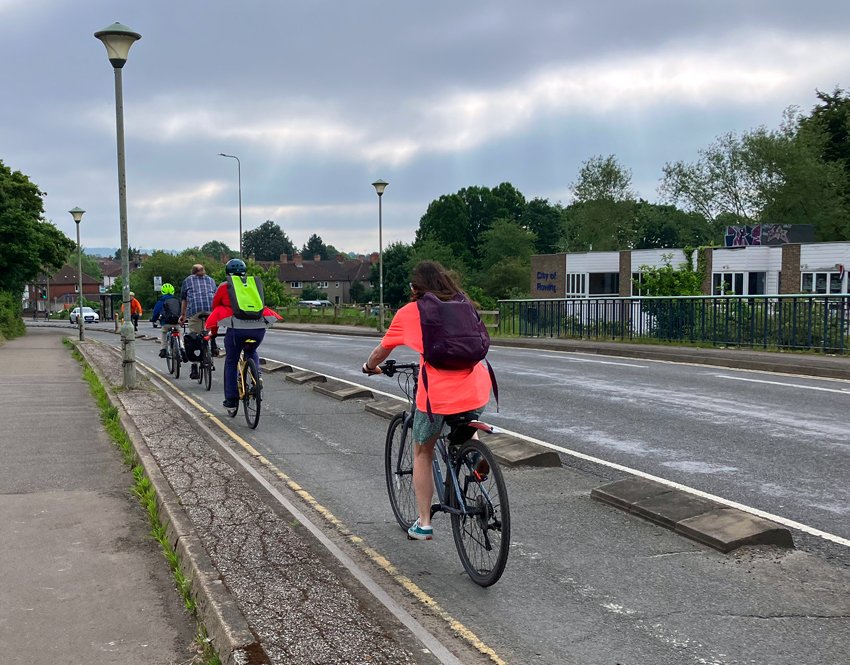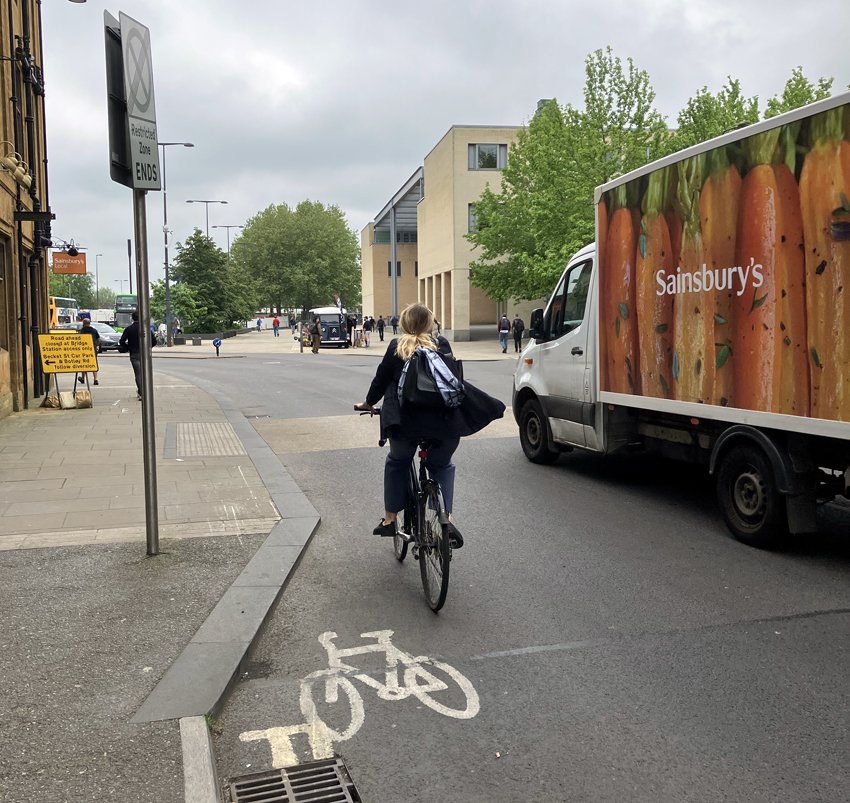Let’s give cyclists some road space

By Danny Yee
Danny Yee is a Cyclox member and sustainable transport activist
Large numbers of people cycle in Oxford despite poor-quality infrastructure that is sometimes dangerous.
London Road, Headington
On London Road (to name just one example) the cycle tracks are too narrow, have manhole covers in the middle of them, don’t get cleared of leaves or debris, undulate, and give way to every side road, however minor. Cycling is in theory separated from walking, but only by a painted white line. There is not enough space for people to walk side-by-side, or for people cycling to overtake one another. This means that cyclists and walkers share the space, with all the problems that brings. It is safer and more comfortable to cycle in the bus lane, if you’re prepared to share space with buses and taxis.
The cycle track in London Road is 1.3 m wide. National guidance sets the minimum width for a cycle track at 2 m, with an absolute minimum of 1.5 m at constraints.
On London Road it is safer and more comfortable to cycle in the bus lane that the cycle track, but means sharing space with buses and taxis.

If we want cycling and walking to be safe and accessible, we can’t just paint white lines on the footway and take space away from pedestrians. We need to reallocate space from motor traffic to provide proper continuous cycle tracks.
Donnington Bridge
On Donnington Bridge (main photo) the two-way cycle track is dangerously sub-standard. It is only 2 m wide even though the official ‘design width’ for cycles is 1.2 m and some tricycles are 1.1 m-wide. National guidance sets the minimum width for a two-way cycle track at 3 m, with 2.5 m allowed for short distances at constraints.
In addition the cycle track here is not adequately separated from motor traffic. Cycling westbound with vehicles coming directly towards you on the left and cycles approaching on the right can be scary. This is one reason people cycling with children sometimes use the footway. And there is poor connectivity at either end: coming from the east there is no sensible way of getting onto the cycle track, and at the western end there is no way of getting off it to Canning Crescent or Weirs Lane.
The carriageway over the bridge should be narrowed to 5.5 m — which buses can cope with for short distances at 20 mph — so the cycle track can be widened to 2.8 m.
Frideswide Square
People are allowed to cycle anywhere on Frideswide Square, but the lack of any marked cycle lanes makes it confusing and dangerous. There is a choice of mixing with heavy flows of traffic including buses and HGVs or cycling on the footway, which is permitted, but with no clear and safe way to get on or off it.
Approaching Frideswide Square from Hythe Bridge Street, the cycle lane suddenly disappears as the pavement widens, and cyclists are forced to merge with motor traffic. They then have to face down motorists on the roundabout, or cross two lanes of motor traffic to get on the pavement outside the Saïd Business School.

Approaching Frideswide Square from Hythe Bridge Street, the cycle lane suddenly disappears as the pavement widens, and cyclists are forced to merge with motor traffic.
When the square seizes up with traffic, fast cycle commuters and delivery riders end up cycling on the footway, dodging pedestrians at high speeds. Failure to provide allocated space for cycling leaves cycle-riders with a choice: annoy drivers (and face stress and danger), annoy pedestrians, or don’t cycle at all.
The enormous amount of space in Frideswide Square would easily allow separate cycle tracks but these were deliberately omitted from the design.
We know what proper cycling infrastructure looks like, but it means reallocating space and time from motor vehicles to cycles and pedestrians.
Image credits
Danny Yee
